 W
WThe participation of Italy in the Second World War was characterized by a complex framework of ideology, politics, and diplomacy, while its military actions were often heavily influenced by external factors. Italy joined the war as one of the Axis Powers in 1940, as the French Third Republic surrendered, with a plan to concentrate Italian forces on a major offensive against the British Empire in Africa and the Middle East, known as the "parallel war", while expecting the collapse of British forces in the European theatre. The Italians bombed Mandatory Palestine, invaded Egypt and occupied British Somaliland with initial success. However, German and Japanese actions in 1941 led to the entry of the Soviet Union and United States, respectively, into the war, thus ruining the Italian plan of forcing Britain to agree to a negotiated peace settlement.
 W
WOperation Achse, originally called Operation Alaric, was the codename for the German operation to forcibly disarm the Italian armed forces after Italy's armistice with the Allies on 3 September 1943. The Germans disarmed over a million Italian troops within a matter of days, annihilating the Italian military and state.
 W
WThe massacre of the Acqui Division, also known as the Cephalonia massacre, was the mass execution of the men of the Italian 33rd Infantry Division Acqui by the Germans on the island of Cephalonia, Greece, in September 1943, following the Italian armistice during the Second World War. About 5,000 soldiers were massacred and others drowned.
 W
WThe Anglo-Iraqi War was a British-led Allied military campaign during the Second World War against the Kingdom of Iraq under Rashid Ali, who had seized power in the 1941 Iraqi coup d'état, with assistance from Germany and Italy. The campaign resulted in the downfall of Ali's government, the re-occupation of Iraq by the British, and the return to power of the Regent of Iraq, Prince 'Abd al-Ilah, a British ally.
 W
WCase Anton was the military occupation of France carried out by Germany and Italy in November 1942. It marked the end of the Vichy regime as a nominally-independent state and the disbanding of its army, but it continued its existence as a puppet government in Occupied France. One of the last actions of the Vichy armed forces before their dissolution was the scuttling of the French fleet in Toulon to prevent it from falling into Axis hands.
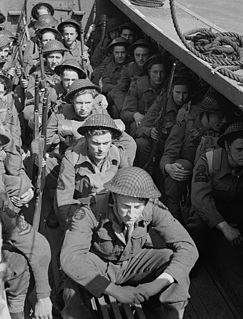 W
WThe Raid on Bardia was an amphibious landing at the coastal town of Bardia in North Africa by British Commandos over the night of 19/20 April 1941 during the Second World War. The raid was carried out by No. 7 Commando also known as A Battalion Layforce together with a small detachment from the Royal Tank Regiment supported by five navy ships and a submarine. The raid—which destroyed an Italian artillery battery and a supply dump—was deemed a success despite the loss of 71 men. The more lasting strategic effect of the raid was the diversion of a German armoured brigade from the front line to provide rear area security.
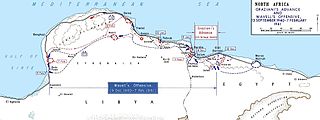 W
WThe rapid British advance during Operation Compass forced the Italian 10th Army to evacuate Cyrenaica, the eastern province of Libya. In late January, the British learned that the Italians were retreating along the Litoranea Balbo from Benghazi. The 7th Armoured Division was dispatched to intercept the remnants of the 10th Army by moving through the desert, south of the Jebel Akhdar via Msus and Antelat as the 6th Australian Division pursued the Italians along the coast road, north of the jebel. The terrain was hard going for the British tanks and Combeforce, a flying column of wheeled vehicles, was sent ahead across the chord of the jebel.
 W
WBETASOM was a submarine base established at Bordeaux, France by the Italian Regia Marina Italiana during World War II. From this base, Italian submarines participated in the Battle of the Atlantic from 1940 to 1943 as part of the Axis anti-shipping campaign against the Allies.
 W
WThe bombing of Rome in World War II took place on several occasions in 1943 and 1944, primarily by Allied and to a smaller degree by Axis aircraft, before the city was invaded by the Allies on June 4, 1944. Pope Pius XII was initially unsuccessful in attempting to have Rome declared an open city, through negotiations with President Roosevelt via Archbishop Francis Spellman. Rome was eventually declared an open city on August 14, 1943 by the defending forces.
 W
WThe Boves massacre was a World War II war crime that took place on 19 September 1943 in the comune of Boves, Italy. The event took place following the Italian surrender on 8 September 1943. Twenty-three Italian civilians were killed and several hundred houses were destroyed by artillery fire of the Waffen-SS under the command of Joachim Peiper. The massacre and destruction were reprisals for one German soldier having been killed and two German NCOs having been captured and held by Italian partisans in the vicinity of the town. After obtaining their release, Peiper ordered the destruction of the town, despite earlier promising not to do so.
 W
WOperation Compass was the first large British military operation of the Western Desert Campaign (1940–1943) during the Second World War. British, Indian, Commonwealth and Allied forces attacked Italian forces of the 10th Army in western Egypt and Cyrenaica, the eastern province of Libya, from December 1940 to February 1941.
 W
WJadu, in other languages also: Giado (Italian) and Gado, is a mountain town in western Libya, in the Jabal al Gharbi District and the Nafusa Mountains.
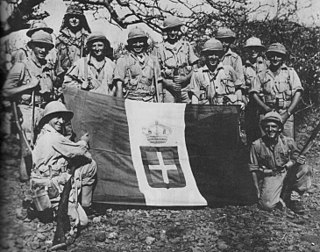 W
WThe East African campaign was fought in East Africa during the Second World War by Allies of World War II, mainly from the British Empire, against Italy and its colony of Italian East Africa, between June 1940 and November 1941. The British Middle East Command with troops from the United Kingdom, South Africa, British India, Uganda Protectorate, Kenya, Somaliland, West Africa, Northern and Southern Rhodesia, Sudan and Nyasaland participated in the campaign. These were joined by the Allied Force Publique of Belgian Congo, Imperial Ethiopian Arbegnoch and a small unit of Free French.
 W
WThe Italian invasion of France, also called the Battle of the Alps, was the first major Italian engagement of World War II and the last major engagement of the Battle of France.
 W
WItalian-occupied France was an area of south-eastern France and Monaco occupied by the Kingdom of Italy between 1940 and 1943 in parallel to the German occupation of France. The occupation had two phases, divided by Case Anton in November 1942 in which the Italian zone expanded significantly. Italian forces retreated from France in September 1943 in the aftermath of the fall of the Fascist regime in Italy, and German Wehrmacht forces occupied the abandoned areas until the Liberation.
 W
WThe Battle of Garfagnana, known to the Germans as Operation Winter Storm and nicknamed the "Christmas Offensive", was a successful Axis offensive against American forces on the western sector of the Gothic Line during World War II. It took place in December 1944 in the north Tuscan Apennines, near Massa and Lucca.
 W
WThe Italian invasion of British Somaliland was part of the East African campaign (1940–1941) in which Italian, Eritrean and Somali forces of Fascist Italy entered British Somaliland and defeated its combined garrison of British, Commonwealth and colonial forces supported by Somali irregulars. The Italian victory was based on mobility and speed but was hampered by the terrain, rainy weather and British resistance.
 W
WThe Italian guerrilla war in Ethiopia was a conflict fought from the summer of 1941 to the autumn of 1943 by remnants of Italian troops in Ethiopia and Somalia, in a short-lived attempt to re-establish Italian East Africa. The guerrilla campaign was fought following the Italian defeat during the East African Campaign of World War II, while the war was still raging in Northern Africa and Europe.
 W
WThe Italian invasion of Albania was a brief military campaign by the Kingdom of Italy against the Albanian Kingdom. The conflict was a result of the imperialist policies of Italian dictator Benito Mussolini. Albania was rapidly overrun, its ruler King Zog I forced into exile in neighbouring Greece, and the country made part of the Italian Empire as a protectorate in personal union with the Italian Crown.
 W
WThe Italian invasion of Egypt was an offensive in the Second World War, against British, Commonwealth and Free French forces in the Kingdom of Egypt. The invasion by the Italian 10th Army ended border skirmishing on the frontier and began the Western Desert Campaign (1940–1943) proper. The Italian strategy was to advance from Libya along the Egyptian coast to seize the Suez Canal. After numerous delays, the scope of the offensive was reduced to an advance as far as Sidi Barrani and the engagement of any British forces in the area.
 W
W"Italian Military Internees" was the official name given by Germany to the Italian soldiers captured, rounded up and deported in the territories of Nazi Germany in Operation Achse in the days immediately following the World War II armistice between Italy and Allied armed forces.
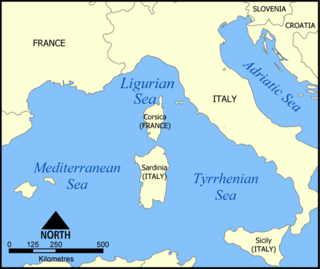 W
WItalian-occupied Corsica refers to the military occupation by the Kingdom of Italy of the island of Corsica during the Second World War, from November 1942 to September 1943. After an initial period of increased control over Corsica, by early spring 1943 the Italian forces started losing territory to the local Maquis. In the aftermath of the Armistice of Cassibile, the Italian capitulation to the Allies, Italian units sided with the new German garrison troops or the local Maquis and Free French Forces.
 W
WThe Italian participation in the Eastern Front represented the military intervention of the Kingdom of Italy in the Operation Barbarossa, launched by Nazi Germany against the Soviet Union in 1941. The commitment to actively take part in the German offensive was decided by Benito Mussolini a few months before the beginning of the operation, when he became aware of Adolf Hitler's intention to invade, but it was confirmed only in the morning of 22 June 1941, as soon as the Italian dictator was informed that same day the German armies had given way to the invasion.
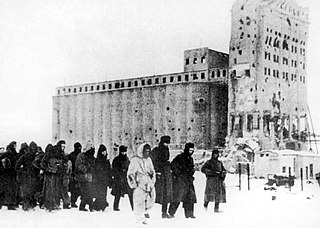 W
WItalian prisoners of war in the Soviet union is the narrative of POWs from the Italian Army in Russia and of their fate in Stalin's Soviet Union during and after World War II.
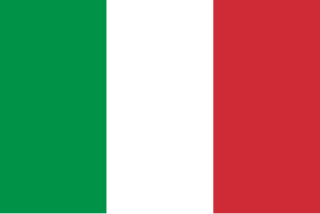 W
WThe Italian Social Republic, popularly and historically known as the Republic of Salò, was a German puppet state with limited recognition that was created during the later part of World War II, and existing from the beginning of German occupation of Italy in September 1943 until the surrender of German troops in Italy in May 1945. During the civil war, which split the country in two, it fought against the Italian Resistance.
 W
WThe Massacre of Kos was a war crime perpetrated in early October 1943 by the Wehrmacht against Italian army PoWs on the Dodecanese island of Kos, then under Italian occupation. About a hundred Italian officers were shot on the commands of General Friedrich-Wilhelm Müller, after being considered traitors for resisting the German invasion of the island.
 W
WThe Lake Maggiore massacres was a set of World War II war crimes that took place near Lake Maggiore, Italy, in September and October 1943. Despite strict orders not to commit any violence against civilians in the aftermath of the Italian surrender on 8 September 1943, members of the 1st SS Panzer Division Leibstandarte SS Adolf Hitler murdered 56, predominantly Italian and Greek, Jews. Many of the bodies were sunk into the lake to prevent discovery but one washed ashore in neighbouring Switzerland, drawing international attention to the massacre and prompting an inconclusive divisional inquiry. It is commonly referred to as the first German massacre of Jews in Italy during World War II.
 W
WThe Tunisian campaign was a series of battles that took place in Tunisia during the North African campaign of the Second World War, between Axis and Allied forces. The Allies consisted of British Imperial Forces, including a Greek contingent, with American and French corps. The battle opened with initial success by the German and Italian forces but the massive supply interdiction efforts led to the decisive defeat of the Axis. Over 250,000 German and Italian troops were taken as prisoners of war, including most of the Afrika Korps.
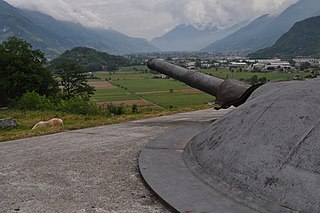 W
WThe Valtellina Redoubt or, officially, in Italian, Ridotto Alpino Repubblicano or RAR, was the intended final stronghold or redoubt of the Italian fascist regime of Benito Mussolini at the end of World War II. It was to be based in the Valtellina, a valley in the Italian Alps, which had the natural protection afforded by the surrounding mountains as well as the possibility of re-using fortifications built in the area for World War I. The idea was initially proposed in September 1944 by Alessandro Pavolini, one of the fascist leaders, who saw it as the place for the regime to make a "heroic" last stand which would inspire a future fascist revolution.
 W
WThe Western Desert campaign took place in the deserts of Egypt and Libya and was the main theatre in the North African campaign of the Second World War. Military operations began in June 1940 with the Italian declaration of war and the Italian invasion of Egypt from Libya in September. Operation Compass, a five-day British raid in December 1940, led to the destruction of the Italian 10th Army. Benito Mussolini sought help from Adolf Hitler, who sent a small German force to Tripoli under Directive 22. The Afrika Korps was formally under Italian command, as Italy was the main Axis power in the Mediterranean and North Africa.
 W
WThe Western Front was a military theatre of World War II encompassing Denmark, Norway, Luxembourg, Belgium, the Netherlands, the United Kingdom, France, Italy, and Germany. World War II military engagements in Southern Europe and elsewhere are generally considered as separate theatres. The Western Front was marked by two phases of large-scale combat operations. The first phase saw the capitulation of Luxembourg, Netherlands, Belgium, and France during May and June 1940 after their defeat in the Low Countries and the northern half of France, and continued into an air war between Germany and Britain that climaxed with the Battle of Britain. The second phase consisted of large-scale ground combat, which began in June 1944 with the Allied landings in Normandy and continued until the defeat of Germany in May 1945.
 W
WZaptié was the designation given to locally raised gendarmerie units in the Italian colonies of Tripolitania, Cyrenaica, Eritrea and Somaliland between 1889 and 1943.